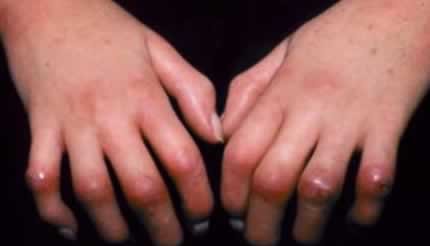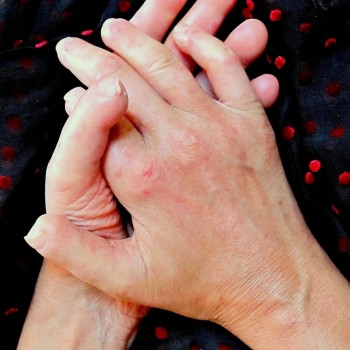Scleroderma
Scleroderma means hard skin. It is a group of diseases that cause abnormal growth of connective tissue. Connective tissue is the material inside your body that gives your tissues their shape and helps keep them strong. In scleroderma, the tissue gets hard or thick. It can cause swelling or pain in your muscles and joints.
In some people, scleroderma affects only the skin. But in many people, scleroderma also harms structures beyond the skin — such as blood vessels, internal organs and the digestive tract. Signs and symptoms vary, depending on which structures are affected.
Scleroderma affects women more often than men and most commonly occurs between the ages of 30 and 50. While there is no cure for scleroderma, a variety of treatments can ease symptoms and improve quality of life.

What are the symptoms of Scleroderma ?
Scleroderma’s signs and symptoms vary, depending on which parts of your body are involved:
- Skin: Nearly everyone who has scleroderma experiences a hardening and tightening of patches of skin. These patches may be shaped like ovals or straight lines, or cover wide areas of the trunk and limbs. The number, location and size of the patches vary by type of scleroderma. Skin can appear shiny because it’s so tight, and movement of the affected area may be restricted.
- Fingers or toes: One of the earliest signs of scleroderma is an exaggerated response to cold temperatures or emotional distress, which can cause numbness, pain or colour changes in the fingers or toes. Called Raynaud’s disease, this condition also occurs in people who don’t have scleroderma.
- Digestive system: In addition to acid reflux, which can damage the section of oesophagus nearest the stomach, some people with scleroderma may also have problems absorbing nutrients if their intestinal muscles aren’t moving food properly through the intestines.
- Heart, lungs or kidneys: Scleroderma can affect the function of the heart, lungs or kidneys to varying degrees. These problems, if left untreated, can become life-threatening.

